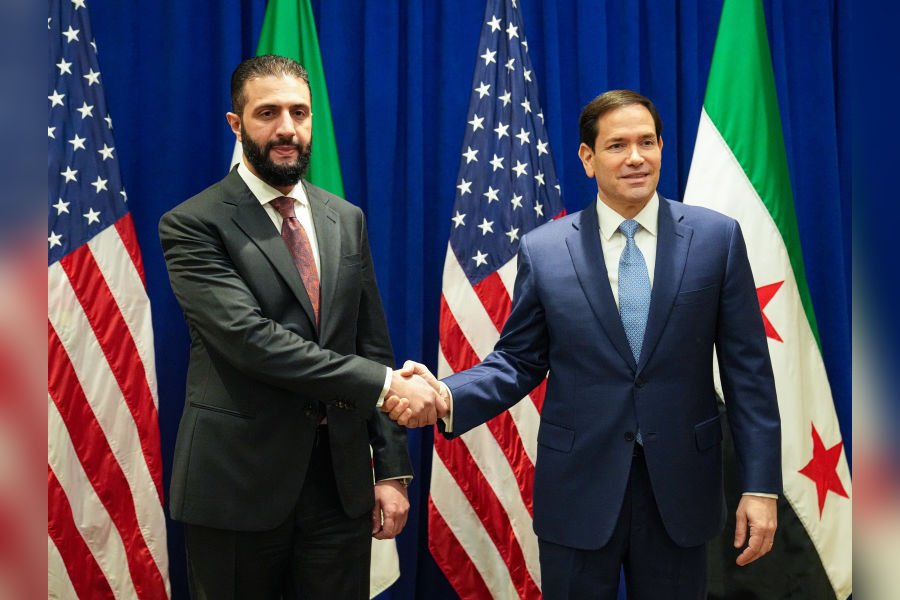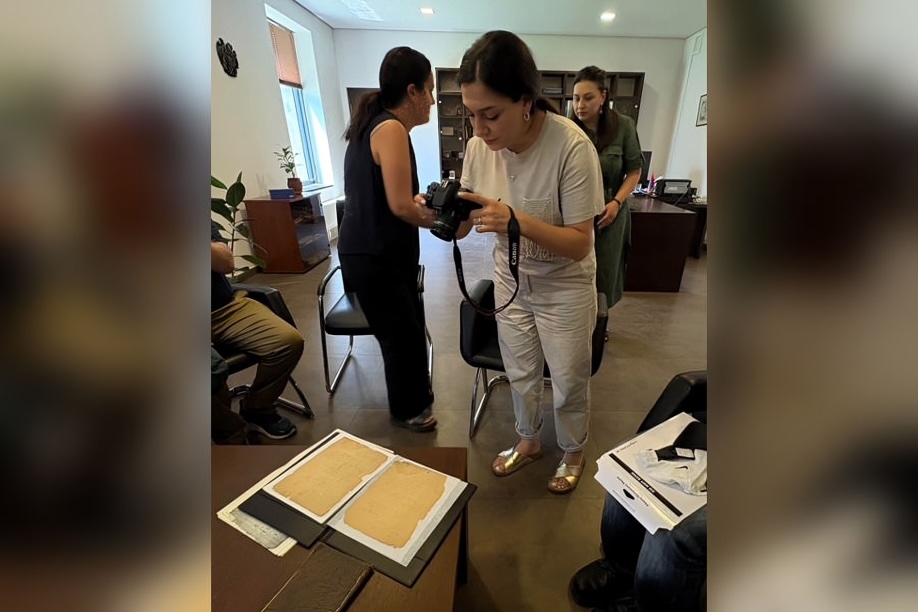The 2025 Syrian parliamentary elections, which took place on October 5, 2025, occasioned a monumental, yet cautious, step in the nation’s chaotic march toward political stabilization and reform. Occurring subsequent to the fall of the Bashar al-Assad-led regime in December 2024, these elections thus mark the very first parliamentary elections to be held in a new era that hopes to pave a path toward a system that is more representative and accountable. Laced deeply in the transition process of Syria under the interim President Ahmed al-Shareh, these parliamentary elections intend to take Syria away from a system that is inherently autocratic by nature and towards a more inclusive political space.
The dawn of a new political chapter
After more than a decade of civil war and after the fall of the Assad regime, Syria undertook the task of trying to reinvent its political features. The interim government under President Ahmed al-Shareh aimed to stabilize the country and focus on implementing institutional reforms. Included in this first stage were the 2025 parliamentary elections, which were foreseen toward the establishment of a legislative assembly to steer the country on the road to democratic transformation.
These elections, held on October 5, 2025, were never to see a direct popular vote in the conventional sense. The profound difficulties of a post-conflict nation had established a hybrid system of indirect election, whereby 140 members of the 210-seat People’s Assembly were elected by an electorate numbering some 6,000 coming from regional electoral colleges, whereas an additional 70 members were appointed directly by the interim President Ahmed al-Shareh. Direct nationwide elections at such an embryonic stage were impossible, since people had been massively displaced, there was no destruction of critical civil rights records and a reliable national population registry was extant.
The role of Interim President Ahamed Al-Shareh
Interim President al-Shareh is a dominant figure during this transitional phase. The period under his leadership saw the inauguration of the interim constitution, passed in March 2025, which lays down the framework of a presidential republic and envisages ahead towards elections. The appointment of the bulk of Members of Parliament by the interim government points to its overwhelming presence during this frail transitional phase, ensuring stability and direction to full democratic processes.
Structure and composition of the new parliament: The hybrid selection process at work
With 210 members in place, the People’s Assembly operates for a renewable term of 30 months within the framework of an overall transitional period of four years. This capacity is, therefore, chosen as the primary legislative authority during these crucial times to develop a new national personality and legal framework for Syria.
Since pragmatic considerations had to take precedence, a mixed system envisaged the seat division between going to the appointed people and those coming in by the election. The 140 members indirectly elected provide the essential link to local constituencies, albeit through an indirect system. By this system, local sub-district committees would select a 6,000-member electoral college, which would in turn elect the assembly members. The presidential nomination of assembly members would make it possible to bring in technocrats, tribal leaders, professionals and academics in order to have a wide net of expertise and representation in the legislative body.
Challenges and criticisms of the electoral process
The 2025 elections were confronted by major challenges and, thereby, drew considerable scrutiny. The immediate aftermath of conflict presented unique logistical hurdles and some unforeseen challenges to the electoral design and its eventual implementation.
Among the more obvious limitations was the exclusion of three provinces from the voting due to ongoing security issues. This, in turn, raised questions about the elected body’s overall representativeness, since huge chunks of the Syrian population could not participate in these elections. From a practical point of view, such exclusions may be warranted for conflict-affected regions, yet they certainly shed light on the fact that the transition is far from complete and that the threat of instability does still linger in parts of the country.
The preliminary results revealed an unacceptably low percentage of seats for women and ethnic or religious minorities.
This comparison draws the line between the former Assad regime’s representation problems and questions the sincerity of the new political framework when it comes to actual commitment to diversity and inclusivity.
Although officially the objective was for women to comprise 20% of participation, the immediate figures indicate a vast undershoot; thus, consideration should be given to actualizing measures to empower marginalized voices.
There have been some critics who have raised speculations regarding whether the indirect electoral college system and the interim president’s powers of appointment could ironically serve to concentrate it in the interim government, instead of decentralizing power. There is some kind of fear that this form of transition might not successfully articulate the country’s rich diversity nor promote genuine institutional transformation, hence might produce yet another despotic dictatorship as opposed to a completely democratic one.
The mandate and future role of the parliament
The constitutionally recognized parliament’s very existence will stand as a paramount force conditioning the fate of Syria. Hence, its duties beyond mere legislative functions include key reforms that will heavily touch upon the nature of governance and approach to law in Syria itself.
Another one of the more important tasks of parliament is the drafting of a new permanent constitution. This will be the constitution of the new Syrian state and will lay out its governmental structure, the rights and obligations of its citizens and the framework of political processes for the near future. At the same time, the Parliament will be preparing new election legislation to regulate general and presidential elections to be held no later than five years after the fall of Assad. This further legislation will help to ensure that the subsequent elections are carried out with greater transparency, greater inclusiveness and greater democratic substance than in the past.
Parliamentary elections, as they currently stand, are explicitly meant to serve as a stepping stone towards free and fair elections. The transitional experience and the establishment of frameworks in this phase would be used to eventually move towards the direct popular vote systems, thereby ensuring greater participation by citizens and representativeness. It is also a critical step to dissolve the Assad-era political parties and ban candidates linked to the former regime to purge the old system and foster a new independent political culture.
Public perception vs. expert view
The proposed parliamentary 2025 elections have brought about divergent sentiments among the Syrian populace as well as international observers. Currently, the belief is a complex mixture of cautious optimism coupled with a healthy dose of doubt concerning the genuineness and further implications of the process.
Some Syrians see these elections as a pathway from the long-standing authoritarian rule.
For those who have been witnesses to long bouts of conflict and gross oppression, any sort of representative body, no matter how imperfect, is a hopeful step toward stability and toward the building of the possible future.
The hope is for this new opening in politics to foster an environment where rebuilding the nation can take place in earnest, along with addressing the deep humanitarian and social issues that continue to persist.
The analysts, for their part, tend to offer more critical perspectives. While they acknowledge the significance of these elections as a foundational step, many expressed reservations about the limitations and potential pitfalls of the current system. Questions of concern focus on whether or not the process will actually produce institutional reform or if it will solidify a new brand of centralized power. There will be a great need to see how much influence the new parliament can exert on policy and changes that bear significance; this could serve as a yardstick in measuring its success and legitimacy.
The road ahead: Challenges and opportunities
The future in Syria is sprinkled with challenges, yet there are some unique opportunities for profound transformational changes.
The transition, as it stands, can only be deemed successful if it manages to come to terms with issues at a very deep level, while also creating incentives for national unity and a bond based on common objectives.
The exclusion of certain provinces in the elections — Raqqa, Al-Hasakah [Hasaka], Suwayda [Suweida] and Ayn al-Arab [in Aleppo Province] were mentioned as electoral districts where voting couldn’t take place due to security conditions, simply demonstrating the regional fragmentation inside Syria.
The post-Assad era governance will have to strike a fine balance between central authority and local administration so that whatever needs and voices are present in these communities get formally recognized and absorbed into the national framework. Accordingly, this would call for a hybrid model that is highly adaptive to the somewhat contrasting realities on the ground.
The reintegration into the international community is key to the full recovery and actual stabilization of Syria. The support of the international community, both political and economic, will be crucial in the financing of reconstruction, the enforcement of reconciliation and ensuring the long-term sustainability of democratic reforms. The elections, however flawed, may signal to the world that the present Syria is committed to a new future and thus, worthy of international assistance and partnerships.
Conclusion: A tentative dawn for Syria
The Syrian parliamentary elections of 2025 are an important yet complicated phase in Syrian post-Assad history. While the hybrid electoral system and security-centered exclusions demonstrate nation-building challenges after a prolonged conflict, the new People’s Assembly yet gives Syria an opportunity to depart from its authoritarian past.
This assembly will be charged with drafting a new constitution and election laws, thereby paving the road for Syria’s future. The road to implementation of a genuinely democratic, inclusive and stable Syria will be long and jeopardizing, requiring unwavering commitment toward reform, reconciliation and concrete international support. These elections are somewhat of an odd mix of progress and persisting challenges, thus suggesting that Syria is at the tentative dawn, where the hope for a new political trajectory is still weighed down by the weight of the gargantuan task ahead.
Advertisement





